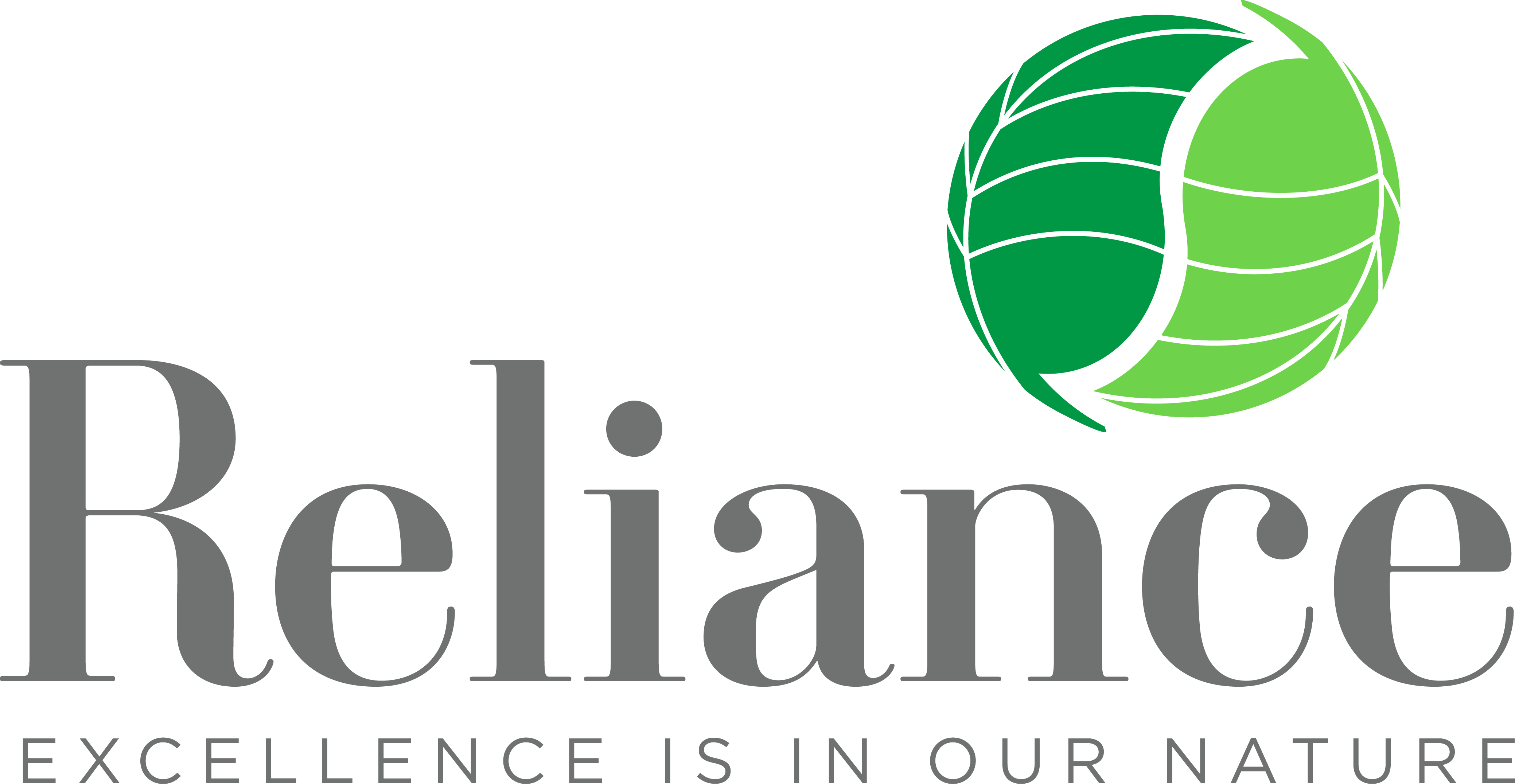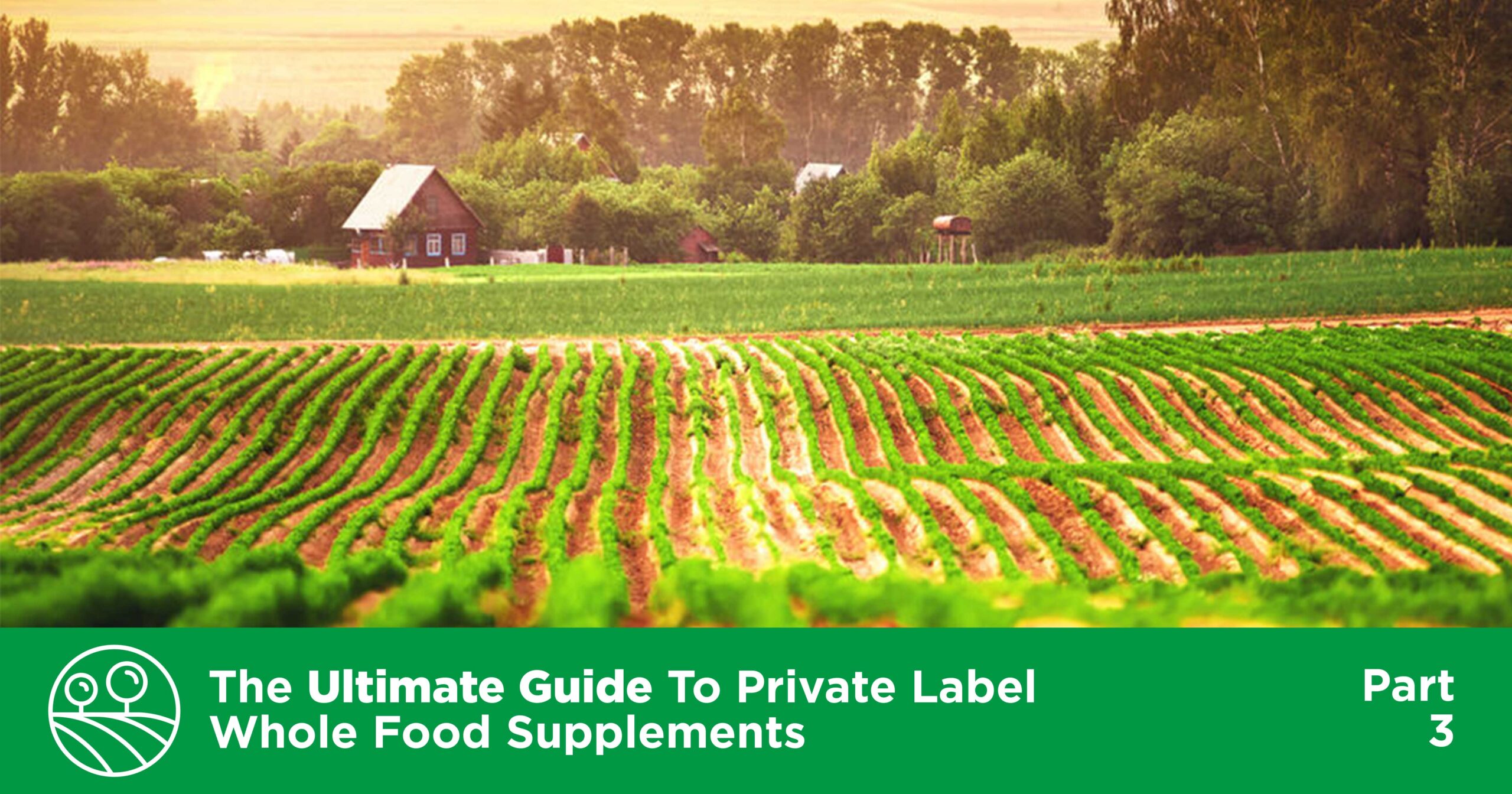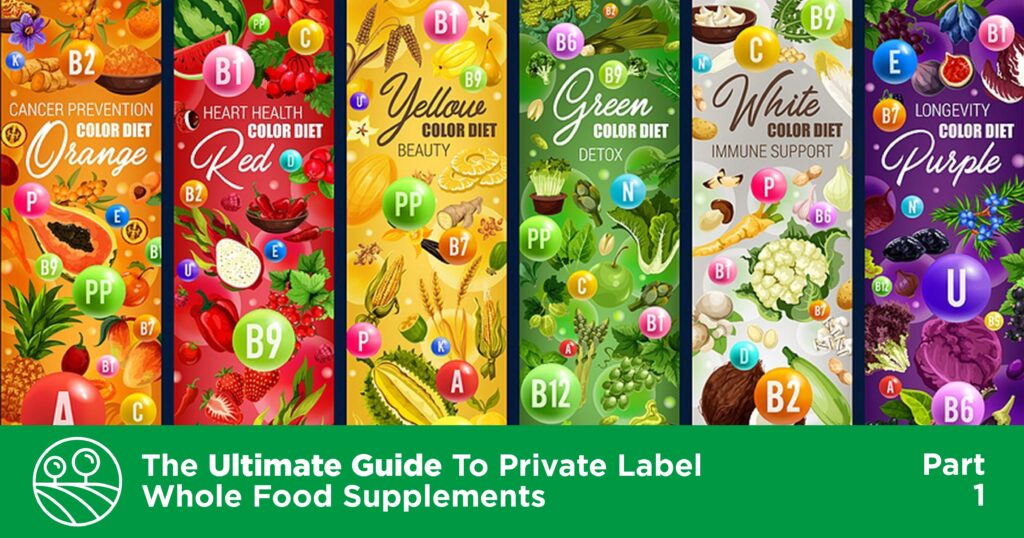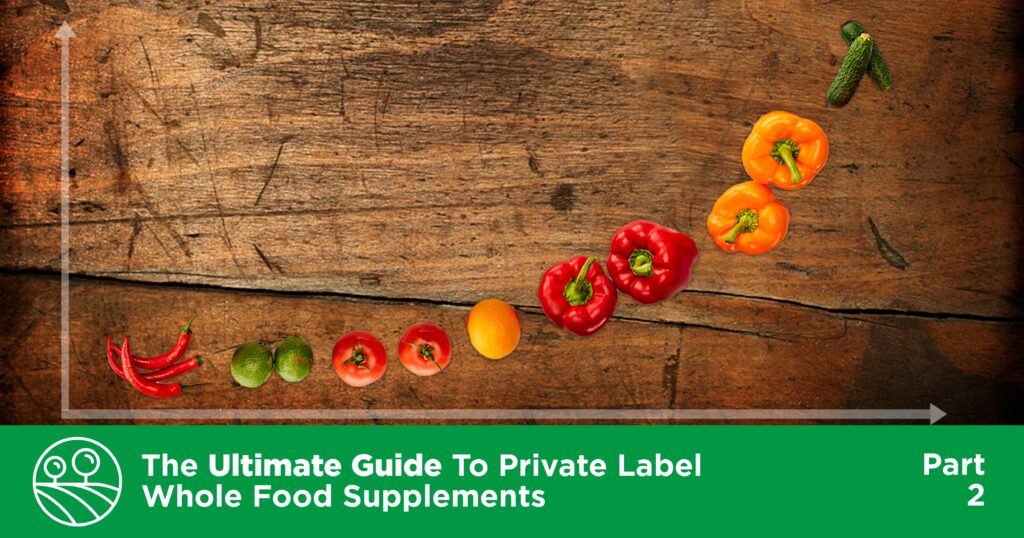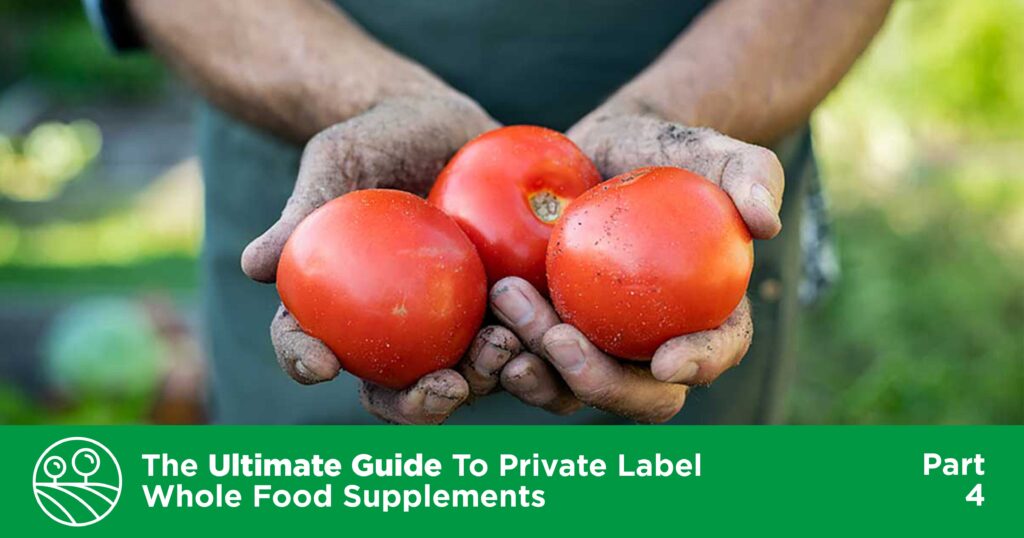This is part of our Ultimate Guide to Private Label Whole Food Supplements, a complete overview of the health benefits of Whole Food supplements, what makes them different from other types of supplements, why there is such consumer demand for them, and how they are made with transparent, high-quality manufacturing processes.
“The notion that the sum of the parts does not necessarily explain the result of the whole has prompted a shift in focus from single nutrients to whole foods, meals, and dietary patterns.”
Melse-Boonstra A. Bioavailability of Micronutrients From Nutrient-Dense Whole Foods: Zooming in on Dairy, Vegetables, and Fruits. Front Nutr. 2020;7:101.
There are several types of manufacturing processes that can be used to create vitamins, minerals, and other dietary supplements. The ingredients in these formulas can be sourced from whole foods, plants, or even animals, or they can be produced synthetically in a laboratory through a series of chemical reactions and processes.
The Synthetic to Whole Food Supplement Spectrum

Supplements can be made in a variety of ways, and they run the gamut from being 100% synthetic to 100% natural. Below are the most common types of supplements, and a snapshot of how they are made:
100% Synthetic
Everything in this formula has been manufactured in a lab and their molecular structures are completely different than their natural counterparts. The starting materials for these “nutrients” are often the hard-to-pronounce, chemical-sounding ingredients on some labels, or things that sound like they should go into your vehicle – petroleum or acetylene gas, for example.
“As Found in Nature” Synthetic
The nutrients in these formulas are completely manufactured in a lab, but the molecular structure is “identical” to their natural counterparts. This form of supplement is abundant as it reduces cost vs more natural types and eliminates concerns about the availability of natural resources.
Genetically Altered Bacterial Fermentation
Genetically altering bacteria, generally done through the process of fermentation, can produce nutrient by-products such as vitamin K2 (menaquinone), CoQ10, some amino acids, and more recently even to create flavors (such as vanillin – the main flavor compound in natural vanilla extract) and antioxidants (resveratrol, among others). There are some concerns with this process, however, including their dissemination into the environment, the spread of antibiotic resistance markers, and the fact that the high consumer demand for Non-GMO ingredients in their supplements might prevent them from being utilized by many manufacturers.
“From Natural Sources”
A supplement can be marked as being “natural” if it contains as little as 10% of natural, plant-derived ingredients. (The other 90% can be synthetic.) The natural parts of this formula would be comprised of nutrients sourced from vegetable, mineral, or animals, then processed and refined into their supplement forms.
Whole Food-Based
Again, technically a supplement can be marketed as “whole food based” if it contains as little as 10% of natural, plant or food-derived ingredients. Typically, a brand would be a little more careful about calling a product “Whole Food” than it would “Natural”, though, as natural carries so many different inclusions whereas whole food is more specific. For true whole food-based supplements, the process for most of the formula might involve freeze-drying herbs, or growing nutrients into a fermentation matrix such as yeast or algae. The raw materials are added to the yeast/algae suspensions where they combine and concentrate, and this culturing of the nutrients makes them more bioavailable. Sometimes in order to achieve a well-established, efficacious potency within a product, it is necessary to supplement the naturally occurring active ingredients with a synthetic form. When required, the ideal solution would be to ferment the synthetic ingredient with the Whole Food base, so it is integrated and better recognized as food.
The nutrients in several of these different types of supplements may have quite similar molecular structures, whether they have come from natural sources or were created in a lab. Although there are multiple viewpoints regarding whether or not the whole food-based forms of these supplements are “better”, there is supportive research showing that in many cases, they are. Sometimes this is because the natural forms of these ingredients include various phytonutrients and cofactors which make the ingredient more bioavailable, or ready for the body to use, than their isolated, synthetic forms. At other times, it might be that certain individuals simply do not metabolize the synthetic forms as well as they do the natural ones. For example, scientists found that although synthetically created vitamin E is safe, it is also less effective than naturally occurring vitamin E. This may be because there is a slight difference in the molecular structure of the synthetic form which allows some of it to pass through the body without being used.
Creating a Whole Food Supplement with Integrity

Today’s dietary supplement consumers want to be able to trust that the products they consume are made of the healthiest and most natural of ingredients. The demand for label call-outs such as “Organic”, “Non-GMO”, and “Whole Food” to ensure that the product contains clean, pure ingredients is of utmost importance to private label whole food supplement consumers. This explains why, out of all the different types of supplements mentioned above, the ones manufacturers should be focused on creating right now are the whole food supplements.
To attain Certified USDA Organic and/or Non-GMO Project Verified status, which probably most Whole Food supplements carry, each ingredient in the formula must be traced back to its origin and identify exactly how they were created.
- Sourcing – The quality of a whole food supplement is determined by its ingredients. Most of the concentrates used in these formulas will contain the whole food form of the nutrients included in the supplement. Maintaining a fully traceable raw material supply chain for a whole food supplement is an intricate and comprehensive task — especially when managing complex formulas which have a lot of different ingredients.
- Extraction – The extraction process of whole foods and herbs does not use chemical solvents, GMO alcohol or hexane. Recent developments use methods such as water or Non-GMO alcohol instead, to allow for the preservation of the complete phytochemical profile of the plant, keeping the organic complexes of nutritional value intact while separating out the unusable portions of the whole.
- Processing – Whole food supplements are also less processed than the other types of supplements. Whether it is through freeze-drying herbs for capsules or growing nutrients into a fermentation matrix such as yeast or algae, the goal of processing delicately is to preserve the full spectrum of nutrients available in the whole plant.
- Testing – At each step of the manufacturing process, beginning with each raw ingredient, quality control measures ensure that all specifications are met. Storage conditions are monitored for temperature and humidity, and finished products are subjected to additional testing to verify their potency and purity. Only after the finished product has been tested and approved will it be released for shipment.
A high-quality whole food supplement will be manufactured in a cGMP (Certified Good Manufacturing Practices) certified USA facility employing advanced research, development, and quality control methods. Rigorous Standard Operating Procedures (SOPs) are implemented in order to assure that customers are purchasing safe, efficacious, and consistent formulas, and the finished product should have clear, transparent labeling to indicate which type of supplement (ie. 100% synthetic versus whole food based) it is.
Key Takeaways
- There are several types of manufacturing processes that can be used to create vitamins, minerals, and other dietary supplements, ranging from 100% synthetic to 100% natural.
- Technically, a product might be labeled as “Natural” or “Whole Food” when as little as 10% of natural, plant-derived ingredients are included. (The other 90% can be synthetic.)
- The nutrients in several of these different types of supplements may have quite similar molecular structures, there is supportive research showing that the whole food / natural forms are generally more bioavailable.
- A supplement of good quality should include clear, transparent labeling to indicate which type of supplement (ie. 100% synthetic versus whole food based) it is.
➤ Learn More About What to Look for in a Private Label Whole Food Supplement Manufacturer
†These statements have not been evaluated by The Food and Drug Administration. This product is not intended to diagnose, treat, cure or prevent any disease.
